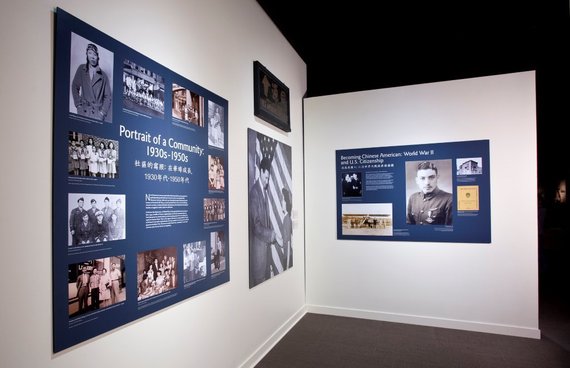Photo by Jeff Lee
“They were there at the beginning,” Jennifer Fang told me. “Chinese Americans were an integral part of the founding of Portland,” she continued.
Historian Fang said that was the most striking realization she came to as the associate curator for a new exhibit at the Oregon Historical Society. It is the local companion to a national show on Chinese immigrants (for which I did a tiny bit of work).
“It is the story of an ethnic group,” she acknowledged. “But it turns out to be much more than that.”
The secret is hidden in the open. People, Asian Americans being no exception, take Asian immigration to be a new phenomenon, enabled by the 1965 legislative reforms that finally eliminated the last vestiges of flagrant racial restrictions on entry. Yet the record of Asian Americans extends back over a century. Well before “PDX” became the hip destination where twenty-somethings “retire,” Chinese Americans were residents, even if they were neither called “Chinese Americans” nor regarded as permanent.
In fact, Portland has had two Chinatowns. The original burned down. It had been inhabited primarily by bachelors, in an era when male laborers were recruited and policies were intended to prevent any population from burgeoning. After it was incinerated, it was replaced over time by settlement only a few blocks away.
The “New Chinatown” in due course became the second-largest in the nation (behind only San Francisco in size). The descendants of the Chinese immigrants from the nineteenth century can still be found in the region. They have dispersed from the blocks that delimited their ancestors.
According to the definitive history of the two neighborhoods, Marie Rose Wong’s Sweet Cakes, Long Journey: The Chinatowns of Portland, the Chinese influx to Portland was so significant that the records for some years list the group as number two after German immigrants; in a few outlying counties during the nineteenth century, the Chinese were the most abundant among the many new arrivals searching for gold.
In the debate over the state constitution, however, Wong indicates “the finished document made little distinction between ‘Chinamen’ and ‘Negroes.’”
All the same, Wong reports that the Chinese settlers were not contained by Chinatown. It was a district, not a ghetto, because of the interactions between Asians and Anglos, the wealth accumulated by some of the former, and the lack of violence from the latter. Chinese Americans commanded respect as they did not elsewhere.
The primary curator of the exhibit, Jackie Peterson-Loomis, explained that Portland has not always been progressive. She recounted how even Greek immigrants were not accepted as fully, equally white.
In such a context, the Portland Chinese Americans demonstrated extraordinary resilience as a community and as individuals. Several panels on display present biographies that are remarkable. They attest to accomplishments that would be impressive today and were unique for their time.
The first American flying ace in World War II, credited with shooting down multiple enemy planes, was Major Arthur Chin. A native of Portland, he was motivated to support his father’s China in the battle against imperial Japan. His lineage, furthermore, is distinctly American: his mother apparently was from Peru. Hazel Ying Lee of Portland was among the female military aviators during the conflict. She died while on duty, in an airfield collision.
The first woman of color selected as the Rose Princess beauty queen was Ruth Fong, in 1946. In a photograph that through a single image tells a story of bridge building, she is being congratulated by Edwin C. Berry, the head of the Urban League, the organization dedicated to African American economic empowerment.
Chinatown has receded into antiquity. It can no longer be discerned as a distinct area. There is a traditional gate, marking a derelict territory. Although the landmark restaurant, Hung Far Low, is boarded up, its colorful sign has been restored,
The Oregon museum has preserved the Chinatown spirit. It deserves to attract a wide audience for its inclusive choice of subject matter, and it has succeeded in drawing in the requisite crowds.
Our past is our future. As our ideals are realized, the documentation of our progress allows us to understand what remains as a problem. Reviewing the challenges that people who came before us faced is humbling, because it reminds us of how they made it possible for us to follow.
